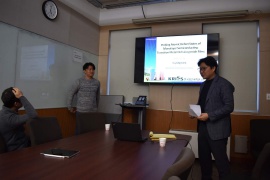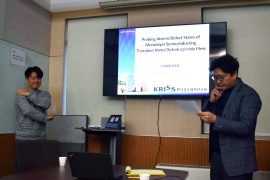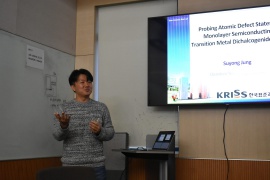
- Speaker: Dr. Jung, Suyong (KRISS)
- Date: Wednesday December 19, 2018 05:00pm
- Place: Jungho Seminar Room
Assessing atomic defect states and their ramifications in the electronic properties of two-dimensional (2D) van der Waals (vdW) semiconducting transition metal dichalcogenides (TMDs) is the first and primary task to expedite multi-disciplinary inquisitions for promoting next-generation electrical and optical device applications with these exciting low-dimensional quantum materials. Here, with an electron tunneling and optical spectroscopy measurements combined with a density functional theory, we spectroscopically locate mid-gap states originated from single chalcogen atom vacancies in the four representative semiconducting monolayer TMD (mTMD) films; WS2, MoS2, WSe2, and MoSe2, with an unprecedentedly high fidelity, and carefully analyze similarities and dissimilarities as to the physical formation of atomic defects and their implications in the respective mTMD semiconducting properties. In addition, we can accurately address both the quasiparticle and optical energy gaps of the intrinsic mTMD films, and find out that Coulombic many body interactions significantly enlarge the quasiparticle energy gaps, and excitonic binding energies which are determined to be 0.83 eV (mWS2), 0.76 eV (mMoS2), 0.82 eV (mWSe2), and 0.82 eV (mMoSe2) when the single-atomic thick semiconducting layers are encapsulated with non-interacting high quality hexagonal boron nitride layers.



